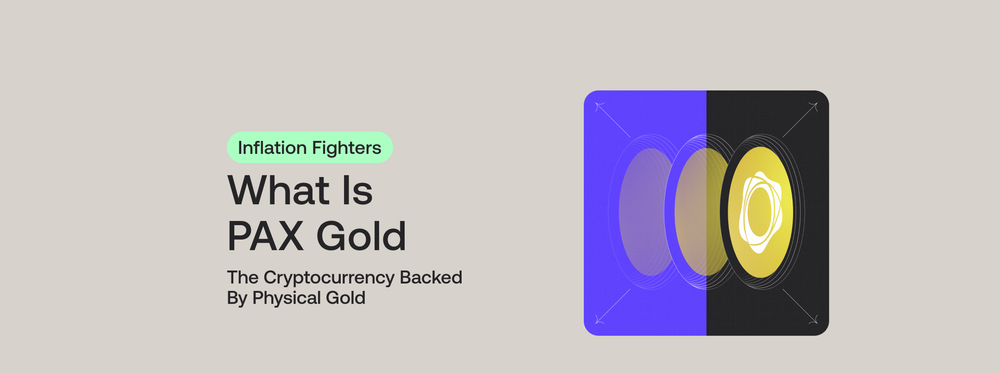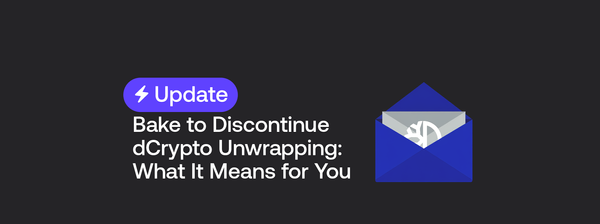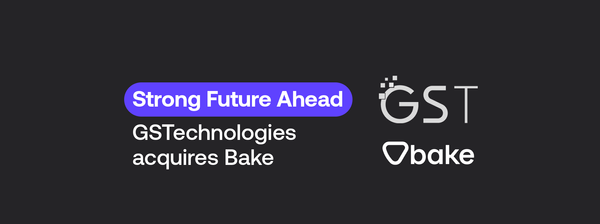What Is PAX Gold (PAXG)? The Cryptocurrency Backed By Physical Gold
Gold has been the cornerstone of wealth preservation for over a millennia. Revered for its scarcity and intrinsic value, it remains a go-to asset for those seeking stability amidst economic uncertainty.
However, the traditional ways of purchasing, storing, and trading gold come with challenges. Physical gold needs secure storage, is difficult to transport, and often involves high transaction fees when buying or selling.
The process lacks the speed and convenience that we have come to expect in today's digital age. This is where the Paxos Trust Company and their tokenized version of gold, PAX Gold (PAXG), come in.
What Is PAX Gold?
PAXG is a direct digital representation of physical gold. Each PAXG token is equivalent to one fine troy ounce of a London Good Delivery gold bar. This means that when you own a PAXG token, you own a piece of real gold.
The value of the PAXG token is directly tied to the value of the physical gold it represents. Unlike many other cryptocurrencies that derive their value from market demand, speculation, or utility, PAXG has a tangible and stable asset backing it - not unlike USDC or USDT, stablecoins that are pegged to the US dollar (USD).
This fusion of a traditional asset (gold) with modern technology (blockchain) offers a unique investment opportunity. It provides the trust and stability of gold while harnessing the benefits of digital assets, such as easy transfers, greater earning potential, and global accessibility.
In essence, PAXG offers the best of both worlds: the reliability and value of physical gold combined with the efficiency, transparency, and flexibility of digital assets.
How Does PAX Gold Work?
When you acquire a PAXG token, you're not just getting a digital currency; you're getting a piece of real, tangible gold.
For every PAXG token issued, an equivalent amount of physical gold is stored in a secure vault. Each PAXG token is allocated a serial number that corresponds to individual gold bars. These gold bars are stored in professional-grade vaults, and the entire process is audited and verified.
Token holders can use the PAXG lookup tool to view details about their physical gold, such as its serial number, value, and other characteristics. PAXG can also be redeemed at any time for actual physical gold (minimum of 430 PAXG) or its equivalent value in fiat currency. This conversion process can be done through the Paxos platform.
Furthermore, PAXG operates on the Ethereum network, making it compatible with Ethereum-based wallets and decentralized applications. Every purchase, sale, or transfer of PAXG is recorded on the Ethereum blockchain, providing a clear and unchangeable record for all parties involved.
PAXG vs. Gold ETFs
There is another way to invest in gold without physically owning the metal: Gold Exchange Traded Funds (ETFs). Gold ETFs are the traditional method of “digitally” investing in Gold, but they operate on different principles.
Direct Ownership
Gold ETFs function similarly to stocks, which are traded on major exchanges and aim to track the price of gold. When you invest in a Gold ETF, you're buying shares of a trust that holds gold as its primary asset. By owning shares of a Gold ETF, you don’t actually own the gold itself. You only own a piece of a fund that holds gold.
Buying PAXG tokens gives you a more direct connection to gold. Each PAXG token represents a specific amount of physical gold, stored in a secure vault. This means you can exchange your PAXG directly for the physical gold it represents (minimum of 430 PAXG), offering a tangibility that ETFs can't match.
Lower Fees
Another distinction between Gold ETFs and PAXG lies in the fees and expenses. Gold ETFs often come with management fees, which can eat into your returns over time. PAXG, being a digital asset, has lower overheads, leading to lower costs for the investor.
Flexibility
Lastly, the flexibility and global accessibility of PAXG stand out above Gold ETFs. Being a digital token, PAXG can be transferred, divided, or even used as collateral in decentralized finance (DeFi). Gold ETFs are tied to traditional financial systems, which don’t offer the same level of versatility due to their (generally) limited accessibility.
While both PAXG and Gold ETFs provide exposure to the value of gold, they do so in unique ways. PAXG offers a more tangible, flexible, and potentially cost-effective approach, while Gold ETFs provide a more traditional, stock-like investment.
The Advantages of PAX Gold
Accessibility and Liquidity
One of the standout features of PAXG is its ease of access. Unlike physical gold, which requires visiting a dealer or a bank, PAXG can be purchased, sold, or traded online, anytime and anywhere.
Divisibility
Physical gold bars or coins come in set denominations, making buying or selling specific amounts challenging. PAXG can be divided into tiny fractions, allowing for precise transactions regardless of investment size.
Secure Storage
Storing physical gold can be a headache, often requiring vaults or safety deposit boxes. With PAXG, the underlying gold is stored in professional-grade vaults, mitigating the risk of theft or loss.
Transparency and Authenticity
Every PAXG token is backed by a specific amount of physical gold. This backing is regularly audited and verified, ensuring you always know the real-world value of your digital gold holdings.
Ability to Earn
As PAXG is a cryptocurrency, it is compatible with the entire crypto ecosystem — including DeFi. You can use PAXG as collateral on DeFi platforms and earn a yield on top of your holdings. Bake is one such platform, offering you a range of DeFi services where you can earn rewards on your PAXG and other cryptocurrencies in just a few clicks.
The Disadvantages of PAX Gold
Technological Learning Curve
If you’re unfamiliar with digital assets and cryptocurrencies, you may face a steep learning curve. Understanding wallets, private keys, and blockchain can be daunting for newcomers, and you may thus choose to stick with familiar traditional methods.
Dependence on Technology
Technology is at the heart of all forms of digital gold, including PAXG. This means investors are reliant on the platforms, exchanges, and wallets that support the digital gold token. Any technical glitches, hacks, or outages can impact accessibility.
Minimum Physical Redemption
While PAXG tokens can be redeemed for physical gold, a minimum amount (430 PAXG) is required. This means smaller holders cannot directly exchange their PAXG for physical gold.
Digital Security Concerns
Digital assets are susceptible to cyber threats. While blockchain technology is secure, other aspects, like exchanges or personal wallets, can be vulnerable. You need to be proactive about your digital security.
PAXG Will Revolutionize the Digital Asset World
PAXG stands at the forefront of a novel sector in the crypto space, merging the timeless value of gold with the unique capabilities of digital assets. As the world becomes more attuned to the benefits of cryptocurrencies, PAXG is primed for broader acceptance. Its unique blend of tangible backing and digital flexibility positions it as an attractive asset for both traditional investors and the tech-savvy generation.
Furthermore, PAXG's potential integration into DeFi platforms and traditional financial systems could redefine its role in the global market. Partnerships with major financial players, technological advancements in blockchain, and educational initiatives to raise awareness could further strengthen its prominence.
Where Can I Purchase PAXG?
PAXG was initially available only on the Paxos website and the itBit exchange. Its growth in popularity eventually led to its listing on other major exchanges like Swissborg, Kraken, and Binance. However, the most user-friendly way to purchase PAXG is through Bake.
You can get started with PAXG through Bake’s Inflation Fighters bundle, which ties PAXG with bitcoin (BTC). Together, these two cryptocurrencies present as the ultimate hedge against rising inflation rates, combining the historical hedge of Gold with the modern hedge of BTC.

DISCLAIMER: Please note that the information on this blog and in any articles posted on this blog is for general information only and should not be relied upon as financial advice. Cake Pte. Ltd., Bake, UAB, and its affiliates (the “Cake Group”) are not licensed financial advisers. You may wish to approach your own independent financial advisor before making any decision to buy, sell or hold any product and/or digital assets mentioned in this blog.
Any views, opinions, references, assertions of fact and/or other statements are not necessarily the views held by the Cake Group. The Cake Group disclaims any liability whatsoever that may arise out of or in connection with such statements. Always do your own research before investing in any financial assets and consult a qualified financial advisor if necessary.




